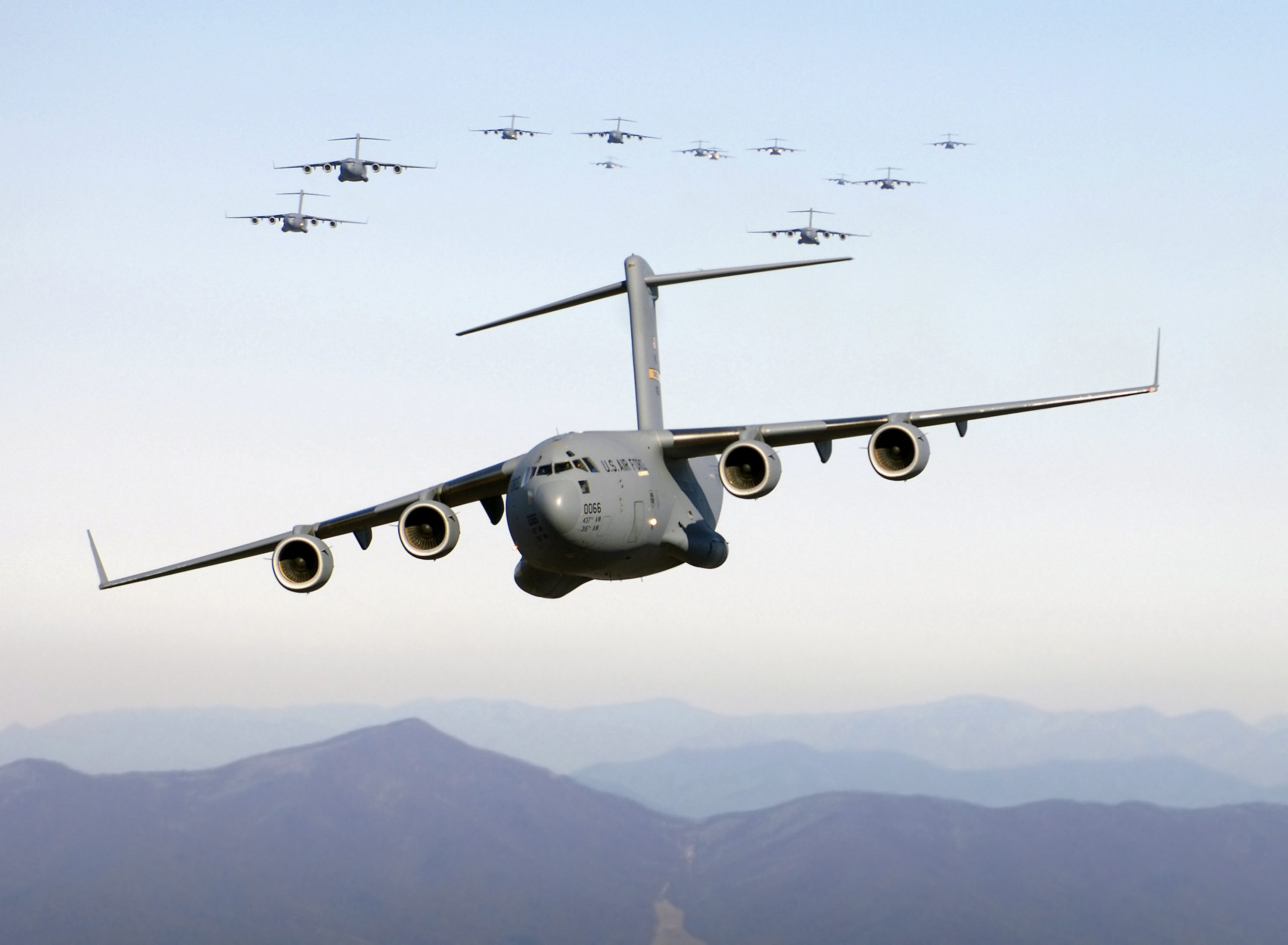The following article on the history of military jets is an excerpt from Barrett Tillman’s book On Wave and Wing: The 100 Year Quest to Perfect the Aircraft Carrier. It is available to order now at Amazon and Barnes & Noble.
While navalists pondered and argued the future in the wake of the Second World War, wondering about the fate of such lynchpins of sea power as the aircraft carrier, aviation progress began a headlong rush into the future, propelled by an exciting concept.
Ever the innovators, the British led the world in proving military jets aboard carriers. Lieutenant Eric Brown—already the world’s leading tailhooker—admitted he was “desperately keen to beat the Americans at being the first to operate jets from carriers.” On December 2, 1945, he made a ten-minute refresher flight in a prototype De Havilland Sea Vampire. The next day he logged four landings aboard the light carrier HMS Ocean. (In an ironic development, Ocean also recorded the last biplane “traps” when Fairey Swordfish flew aboard during Britain’s evacuation of Palestine in 1948.)
DEVELOPING MILITARY JETS FOR AIRCRAFT CARRIERS
The Americans were seven months behind. Off the Virginia coast on July 21, 1946, Lieutenant Commander James J. Davidson launched from Franklin D. Roosevelt in McDonnell’s experimental XFD-1 Phantom. He made several landings, proving the validity of all-jet carrier aircraft as opposed to Ryan’s FR-1 Fireball, a composite prop and jet fighter.
As a contingency the Navy modified an Army jet, Lockheed’s P-80A Shooting Star, for carrier use. That November Marine Lieutenant Colonel Marion Carl, arguably the finest naval aviator of his generation, completed catapult launches and arrested landings aboard FDR.
However, demonstrations were one thing—routine operations were another. The Navy’s first all-jet squadron, Lieutenant Commander William N. Leonard’s VF-17A, began receiving McDonnell FH-1 Phantoms in July 1947. Postwar construction included two 14,500-ton light carriers, Saipan (CVL-48) and Wright (CVL-49), both featuring in jet development. Saipan gained the distinction of operating the first all-jet squadron when VF-17A qualified in its Phantoms in May 1948.
Some of the early problems of operating military jets from carriers were short range and endurance. In the era before in-flight refueling, those concerns posed both a technical and operational concern. Two exceptions were Douglas’s F3D Skyknight, the Navy’s first jet night fighter, and McDonnell’s F2H Banshee. Both were powered by twin axial-flow Westinghouse J34 engines that provided better fuel consumption and performance than centrifugal-flow jets. One demonstration came in October 1954, when Ensign Duane Varner flew an F2H-2 nonstop coast to coast, some 1,900 miles from NAS Los Alamitos, California, to NAS Cecil Field, Florida. The four-hour flight was accomplished without aerial refueling.
Three years later came an even more impressive feat: the first “Pac to Lant” transcontinental flight from one carrier to another. On June 6, 1957, Commander Robert G. Dosé of developmental squadron VX-3, who two years before had logged the first American mirror landing, launched from Bon Homme Richard with Lieutenant Commander Paul Miller, his operations officer. The two F8U-1s cruised at forty-five thousand feet to the Dallas area, descending to twentyfive thousand where two AJ-2 Savage tankers awaited. With tanks topped off, the Crusaders rocketed back to forty-five thousand and cruised at .96 Mach eastbound.
Saratoga was fifty miles off Jacksonville when the Crusaders screamed into the break for a high-speed pass. They trapped after nearly three and a half hours in the air, setting an unofficial cross-country record. Furthermore, they were greeted by President Eisenhower, who was aboard for a look at naval aviation. His administration was good to the Navy, laying down almost one carrier a year during his tenure.
 |
This article on military jets is an excerpt from Barrett Tillman’s book On Wave and Wing: The 100 Year Quest to Perfect the Aircraft Carrier. It is available to order now at Amazon and Barnes & Noble.
You can also buy the book by clicking on the buttons to the left.
Cite This Article
"Military Jets: The Cornerstone of Post-WW2 Air Power" History on the Net© 2000-2024, Salem Media.
April 20, 2024 <https://www.historyonthenet.com/military-jets>
More Citation Information.






